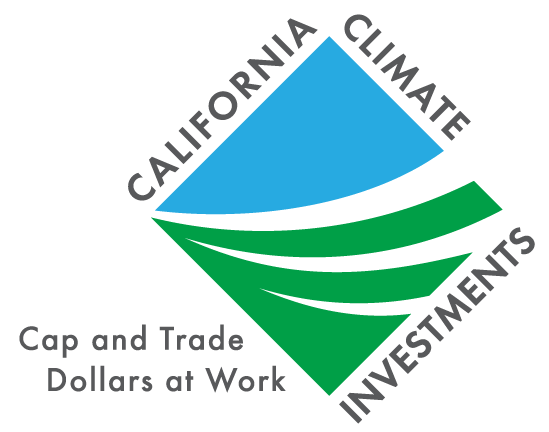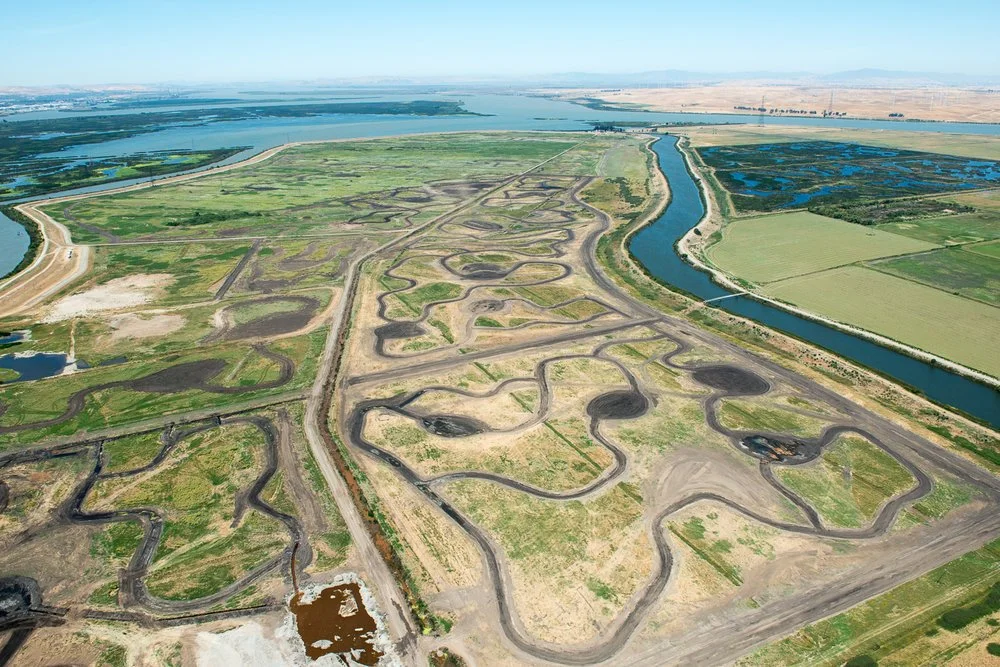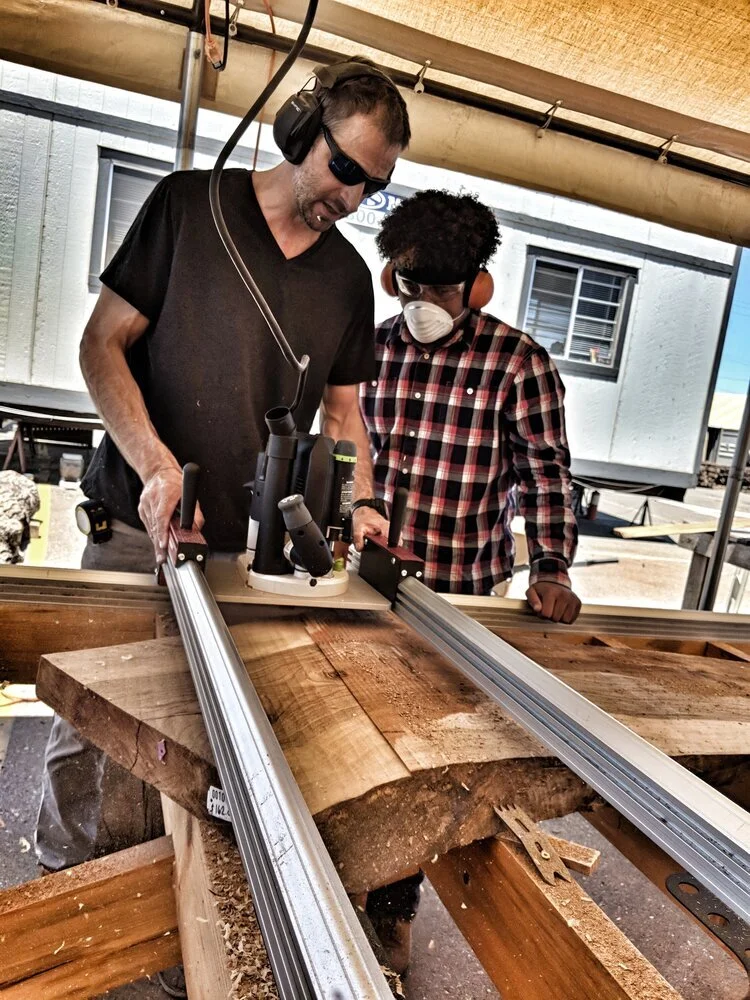In May 2017, the Sacramento Metropolitan Air Quality Management District (AQMD) and its partners unveiled the first six of 29 electric school buses — what will be the largest electric school bus deployment in the U.S. — at a press event in north Sacramento.
Zero-Emission Technology at Ports Provide Cleaner Air for Vulnerable Residents
The adjacent ports of Long Beach and Los Angeles combined are the largest fixed sources of air pollution in the South Coast Air Basin, one of the most polluted air basins in the United States, in large part because the trucks and equipment used at the ports burn diesel fuel. Recognizing this, the Sustainable Terminals Accelerating Regional Transformation demonstration project was awarded $50 million to replace trucks and equipment with zero‑emission technology. The funding, which comes from California Climate Investments, supports the deployment of 102 pieces of zero‑emission terminal equipment and trucks at seaports across California, including at the ports of Los Angeles and Long Beach. These funds are also supporting the development of new, cleaner tugboats; the deployment of two container vessels with cleaner‑burning engines; and advanced workforce development programs to support sustainable goods movement across California.
Moving Goods with Zero-Emission Technology in the Inland Empire
The Volvo Low Impact Green Heavy Transport Solutions (Volvo LIGHTS) project aims to get cleaner trucks on the road to transport goods from ports to the Inland Empire. This project includes 23 zero‑emission battery electric trucks, 29 off‑road battery electric tractors, and 58 Level 2 and direct current fast chargers.
Paving the Way for Zero-Emission Freight Facilities in Long Beach
This program will deploy 38 electric yard trucks, 9 electric gantry cranes, 18 electric heavy lift forklifts, and 15 zero-emission Class 8 trucks. The program is also including a workforce development component with curriculum being developed to support the deployment of this technology with local school districts near the three port locations, community colleges and Long Beach State University.
Woodsmoke Reduction Program Provides Efficient and Cost-Effective Heating
Restoring Coastal Wetlands and Upland Habitat in Santa Barbara County
The North Campus Open Space (NCOS) project is restoring 54 acres of diverse coastal wetlands and upland habitat of native plants and grassland in Santa Barbara County. This restoration will increase Santa Barbara County’s coastal wetlands by 11 percent, which in turn will help adapt the coastal community to sea level rise by protecting inland infrastructure.
Restoring the Central Coast's "Crown Jewel" Salt Marsh
The Blue Carbon at Elkhorn Slough Project is restoring 66 acres of rare salt marsh habitat and native plants while buffering the surrounding areas against future sea level rise. The Tidal Wetland Program at the Elkhorn Slough National Estuarine Research Reserve guided the project with input from more than 100 local partners, scientists, regulators, and community members.
Mountain Meadow Restoration Sequesters Carbon and Builds Resilience
Restoring Wetlands in the San Joaquin-Sacramento River Delta
The San Joaquin-Sacramento River Delta is the cradle which nurtures the drinking water supply of more than 23 million Californians and much of the state’s farm land. But measurements show land on Sherman Island has sunk as much as 28 feet below sea level as the State’s population and demand for water have grown. That’s why California Climate Investments is providing more than $10 million to improve the situation.
Supporting Ecosystem, Community, and Cultural Resilience at Clover Valley Ranch
With help from a $680,974 grant from California Climate Investments through the Wetlands & Watershed Restoration Program, the Sierra Fund and project partners are carrying out multi‑benefit restoration efforts at the 2,655‑acre Clover Valley Ranch. Initiated in 2017, this project will sequester nearly 188,000 metric tons of carbon dioxide equivalent while halting stream incision; increasing biodiversity; and improving hydrologic function, flood reduction, sediment filtration and water quality. However, the goal of this project extends beyond of ecosystem function and carbon sequestration benefits; these activities will also support community and cultural resilience through the promotion of cultural skills and activities.
Water Energy Grants Provide Direct Benefits to Low-Income Households in Rural Counties
The Association of California Community and Energy Services partner agencies replaced 1,090 washing machines and 855 dishwashers with water- and energy-efficient machines . These energy and water savings will continuously provide cost savings across various communities in Kern, Madera, Contra Costa, Kings, San Francisco, and Merced counties and other low-income homes in San Mateo, Shasta, and Tehama counties.
San Gabriel Residents and Businesses Save Water and Energy with Appliance Rebates
Madera County Connects Residents with Water Efficiency Devices
“For the community; by the community” is the motto of the South-East Madera County United (SEMCU), a non-profit mutual benefit organization in the heart of the San Joaquin Valley. In May 2015, with a $218,594 grant from the DWR, members set out to provide water efficiency devices for approximately 75 percent of homes and businesses within SEMCU’s boundary, an area encompassing five disadvantaged community census tracts.
Wishing Tree Park Provides New Green Space in West Carson
One of the Los Angeles Neighborhood Land Trust’s most exciting parks currently under construction is the 8.5‑acre, multi‑benefit Wishing Tree Park located in unincorporated West Carson, Los Angeles County. This project has been in the works for decades, and thanks in part to a $2,500,000 grant from California Climate Investments through the Urban Greening Program the park will be opening to the public in late 2021.
New Greenspaces Help Grow Community Connectivity in Coachella
Greening the Yellow Brick Road Project Transforms Street into a Symbol of Activity and Hope
With $4.1 million from California Natural Resources Agency’s Urban Greening program, this project is helping bring the community’s vision to fruition and will benefit thousands of community residents. The project will create a safe and green public space where neighbors can come together and a designated route for residents to bike and walk in a safe environment.
Reclaimed Urban Wood Supports Small Businesses and Reduces Landfill Emissions
A $996,600 grant from California Climate Investments through the Urban and Community Forestry program will help Urban Salvaged and Reclaimed Woods, Inc. pilot a shared storefront project. This storefront will allow businesses handling salvaged wood from urban areas to combine resources to better process, market, and sell their products.






















